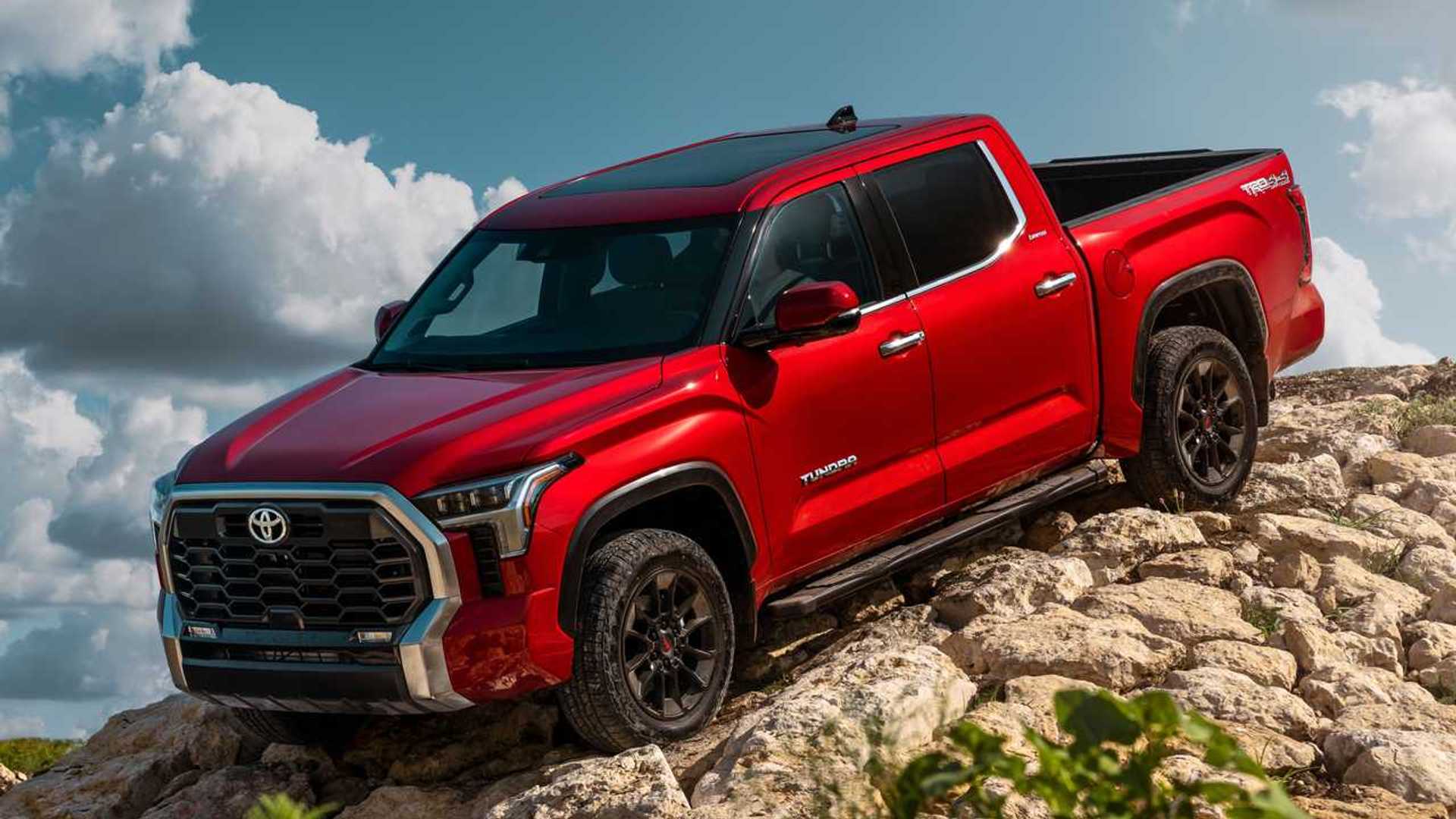Registration renewal is one of the most overlooked costs of vehicle ownership. While insurance, fuel, and maintenance often take center stage, annual tag fees can add up, especially for pickup trucks.
These costs vary dramatically depending on the vehicle’s age, weight, and value and whether you’re in a state that bases registration on weight, MSRP, or a flat fee.
Here’s a look at five pickups that are easy on your wallet at renewal time and five that demand a hefty price for their tags.
Pickups With the Cheapest Registration Renewal
When it comes to owning a pickup truck, most buyers focus on upfront costs like purchase price, insurance, and fuel economy. But one often-overlooked expense that adds up year after year is registration renewal. Depending on where you live, this recurring fee can vary wildly—and in some cases, cost you hundreds annually just to keep your plates legal.
Not all pickups are created equal when it comes to registration fees. Some models are surprisingly wallet-friendly when it’s time to renew, thanks to factors like curb weight, depreciation, or state-specific tax formulas.
In this guide, we break down the pickups that offer the cheapest registration renewal costs, helping you make a smarter, long-term financial decision—whether you’re shopping for a new truck or trying to lower your annual ownership expenses.
1. Toyota Tacoma
The Toyota Tacoma isn’t just reliable and fuel-efficient it’s also easy on the registration fees. Most states base registration on vehicle value or weight, and the Tacoma benefits from being midsize and relatively light.
In states like Oregon or Florida, the Tacoma’s low GVWR and depreciated value result in much lower renewal costs, often staying under $100 annually after the first few years.
The 2025 Toyota Tacoma continues to dominate the midsize pickup segment as America’s favorite, available in a lineup that includes the SR, SR5, TRD Off-Road, TRD PreRunner, TRD Sport, Limited, and Trailhunter trims. Buyers can choose between the XtraCab or Double Cab configurations, with bed lengths of five or six feet and up to 10 inches of ground clearance.
Powering the Tacoma is a 2.4-liter turbocharged four-cylinder engine, branded as the i-Force. It delivers 228 horsepower in the SR trim, 278 horsepower in other trims paired with the 8-speed automatic transmission, and 270 horsepower when equipped with the 6-speed manual gearbox.
For those seeking more muscle, the i-Force Max hybrid system combines the turbo-four with an electric motor, resulting in an output of 326 horsepower, available with either rear- or four-wheel drive. However, only the Double Cab configuration is eligible for the manual transmission or i-Force Max powertrain.
Payload capacity ranges from 1,380 to 1,710 pounds depending on the model, while towing capacity tops out at 6,500 pounds. The Tacoma returns a combined fuel economy of 20–24 mpg on 87-octane fuel. If the specs already have you wanting one in your driveway, Toyota is offering attractive lease deals for June.
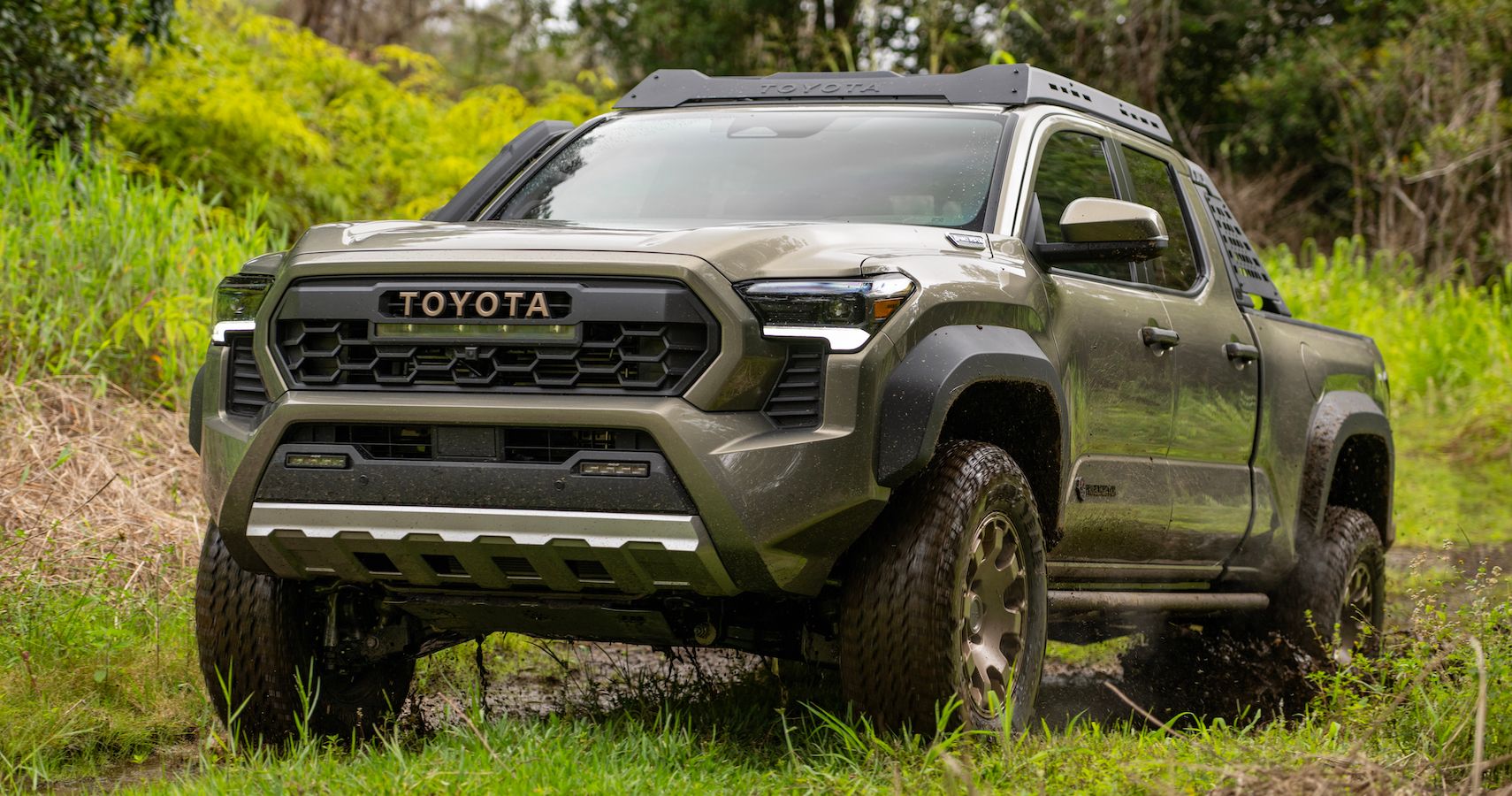
In South Florida, the 2025 Toyota Tacoma 4WD TRD Sport Hybrid Double Cab with an automatic transmission can be leased for $489 per month for 36 months, with $3,788 due at signing. Over in Dallas, Toyota is offering the SR5 for $269 a month for 36 months with $3,999 due at signing.
Southern California residents can choose between leasing a Tacoma TRD Sport at $319 per month or a TRD Off-Road at $389 per month, both over 36 months and requiring $3,999 down. In the Northwest region, lease deals include a Tacoma SR5 for $309 monthly or a TRD Off-Road for $429, again both for three years with $3,999 down.
In Detroit, options include the Tacoma TRD Off-Road at $359 per month or the TRD Sport i-Force Max at $459, each for 36 months with $3,999 down. Meanwhile, in the Southeast, the TRD Sport i-Force Max goes for $429 a month for 36 months with $3,728 due at signing. There are currently no special lease offers available in the Northeast.
Before signing any lease agreement, keep in mind that monthly payments, taxes, and fees can vary by location. It’s essential to check with local dealerships for the most accurate and current pricing.
For those preferring a $0-down lease option, pricing naturally rises. In Florida, the same 4WD TRD Sport Hybrid Double Cab can be leased for $600 per month
In Dallas, a Tacoma lease starts at $380 monthly, while Southern California pricing ranges from $430 per month for a TRD Sport to $500 for a TRD Off-Road. Heading up the West Coast, the SR5 leases for $420 per month, with the TRD Off-Road costing $540 monthly.
If you’re in the market for a midsize pickup that offers dependable performance and a well-earned reputation for reliability, the 2025 Tacoma is hard to ignore—especially with these competitive lease offers available through the end of June. Compared to many SUV leases, the Tacoma presents a cost-effective option with the added benefit of truck utility.
Also Read: Top 10 Most Reliable Used Cars You Can Buy for Under $10,000 in 2025
2. Ford Ranger
The Ford Ranger’s modest curb weight and economical design make it one of the more affordable trucks when it comes to renewing tags.
In states like Arizona, where registration is based on assessed value, the Ranger’s initial MSRP and depreciation curve work in its favor. Owners often report paying under $150 even during the early years, and far less after five years of ownership.
Redesigned for the 2024 model year, the Ford Ranger enters 2025 with only a few minor changes. This midsize pickup continues to be offered solely as a crew cab with a five-foot bed.
Buyers can choose between two engines: a turbocharged 2.3-liter four-cylinder that produces 270 horsepower, and a 315-horsepower twin-turbocharged V-6. Both engines are paired with a 10-speed automatic transmission and can be had with either rear- or four-wheel drive.
The Ranger’s exterior design remains closely aligned with the styling of the larger F-150, while the cabin can be tailored to suit different tastes—from basic and utilitarian to premium and tech-loaded.
The Lariat trim level delivers high-end features like leather upholstery, advanced infotainment, and upgraded tech options, albeit at a higher price point. While the Ranger is arguably the best it’s ever been, competitors like the Chevrolet Colorado, GMC Canyon, and Toyota Tacoma have all received comparable updates.
As a result, shoppers in this segment will need to carefully evaluate their options. Still, the Ford Ranger earns high marks across the board and secures a spot on our Editors’ Choice list for 2025.
In the current rankings of midsize pickup trucks, the Ford Ranger lands in second place, just behind the Ranger Raptor. The Raptor starts at $57,765, while the regular Ranger starts at $35,025.
It’s followed closely by the Toyota Tacoma at $33,185, the Chevrolet Colorado at $33,595, the GMC Canyon at $40,095, and the Honda Ridgeline at $41,600. For those interested in comparing the Ranger directly against these and other vehicles, our new comparison tool offers a side-by-side breakdown of up to five models.
For 2025, updates are subtle. Three exterior colors—Cactus Gray, Iconic Silver, and Hot Pepper Red—have been retired, replaced by Ruby Red Metallic, Desert Sand, and Marsh Gray. Additionally, a new Black Appearance package is now available.
The 2025 Ford Ranger is priced between $35,025 and $45,810 depending on the trim and options. The base XL starts at $35,025, the mid-level XLT at $37,540, and the top-tier Lariat at $45,810. While the Lariat offers premium features, its pricing approaches that of full-size trucks.
For the best balance of value and equipment, the XLT is a smart choice. It comes with features like LED exterior lighting, 17-inch aluminum wheels, power-folding side mirrors, in-dash navigation, a wireless smartphone charging pad, and a bed-mounted power outlet.

It also includes Ford’s Co-Pilot360 suite of driver-assistance technologies, such as blind-spot monitoring, rear parking sensors, and lane-keeping assist. Adding the optional Technology package brings even more convenience with adaptive cruise control, a 360-degree camera system, and front parking sensors.
Under the hood, the base powertrain is a turbocharged 2.3-liter four-cylinder making 270 horsepower, which provides more than enough power for daily use. Those looking for more punch can opt for the 315-horsepower twin-turbo 2.7-liter V-6. Both engines pair with a 10-speed automatic transmission and are available with rear- or four-wheel drive.
In testing, the Ranger has shown a more composed ride than its predecessor, with a smoother on-road experience, although the steering feel remains a bit vague. The V-6, in particular, delivers strong acceleration and is well worth the upgrade for those wanting extra muscle.
Performance numbers back this up. A Lariat model with the four-cylinder engine accelerated from 0 to 60 mph in 6.2 seconds, while the V-6-powered Ranger did it in just 5.6 seconds. For buyers looking for peak performance and off-road capabilities, the Ranger Raptor is the go-to model, and we cover it in a separate review.
When it comes to utility, the Ranger delivers solid numbers. Regardless of engine choice, it can tow up to 7,500 pounds. Payload capacity varies slightly with drivetrain, offering a maximum of 1,805 pounds for rear-wheel-drive models and 1,711 pounds for four-wheel-drive configurations.
Inside, the Ranger’s cabin is updated with a fresh, modern design. Highlights include a digital gauge cluster, textured dashboard trim, and distinctive honeycomb-patterned air vents.
The Lariat trim level elevates comfort significantly, offering leather-trimmed, power-adjustable front seats, a leather-wrapped steering wheel and shifter, and a B&O premium sound system. Most of the truck’s controls are now housed in the infotainment system, reducing the need for physical buttons.
Ford has added clever storage options throughout the cabin, such as a hidden upper glovebox, large door pockets, and under-seat storage in the rear. The only available body style is the SuperCrew crew cab, which has four doors and seats up to five people.
On the tech side, a 10.1-inch touchscreen is standard, but a larger 12-inch vertically oriented display is available for buyers wanting more screen real estate. Both screens run Ford’s Sync 4 system, which includes features like zone lighting to help illuminate work areas or campsites.
Every model also includes a digital gauge display—either 8.0 or 12.4 inches in size—along with standard Apple CarPlay and Android Auto. Other tech options include built-in navigation and SiriusXM satellite radio.
Safety and driver-assistance technology are available across the lineup, but the most advanced features come either with higher trims or through optional packages.
3. Nissan Frontier
Another midsize pickup with budget-friendly tag costs, the Nissan Frontier flies under the radar in more ways than one.
With a starting price well under $35,000 and a smaller footprint than full-size rivals, the Frontier typically qualifies for lower fee tiers in states that consider weight or price.
Older models are especially cheap to renew, often under $80 in flat-rate states.
The 2025 Nissan Frontier continues forward with a mid-cycle refresh, just as its larger sibling, the Nissan Titan, bows out of the lineup. Sales momentum is keeping the Frontier relevant, and after spending a week with the updated model, it’s easy to understand why.
To begin with, I have to mention my personal conflict regarding the tech in the 2025 Nissan Frontier. It now offers a 12.3-inch touchscreen, wireless Apple CarPlay and Android Auto, a 360-degree camera system, and other contemporary features.
“But the layout looks a bit dated. The touchscreen is surrounded by large buttons and dials that are clearly labeled. This is probably only a drawback for me, who is a nerd and enjoys all the touchscreens.”
Still, it’s clear that the market has spoken. Drivers today increasingly prefer less reliance on touch controls and more physical buttons that allow them to concentrate on the road. In practice, this design works well.
“Also, the buttons such as the Camera button were helpful in tight off-roading situations.” This kind of functional, straightforward layout proved valuable in real-world use.
I followed up my time with the Frontier by driving a GMC Sierra 1500 and found myself hunting through touchscreen menus to activate the camera. “It was more distracting and time-consuming. Therefore, the Frontier is doing tech right. You can even use the buttons while wearing work gloves.”
That said, there are a few areas where the 2025 Frontier still shows room for improvement. “The steering is awkwardly heavy and takes getting used to.
The towing capacity increased to 7,150 lbs but the Jeep Gladiator and Chevy Colorado can tow up to 7,700 lbs. Some of the touchscreen menus could be more intuitive.” These factors may not be dealbreakers for everyone, but they’re worth noting for buyers comparing closely with rivals.
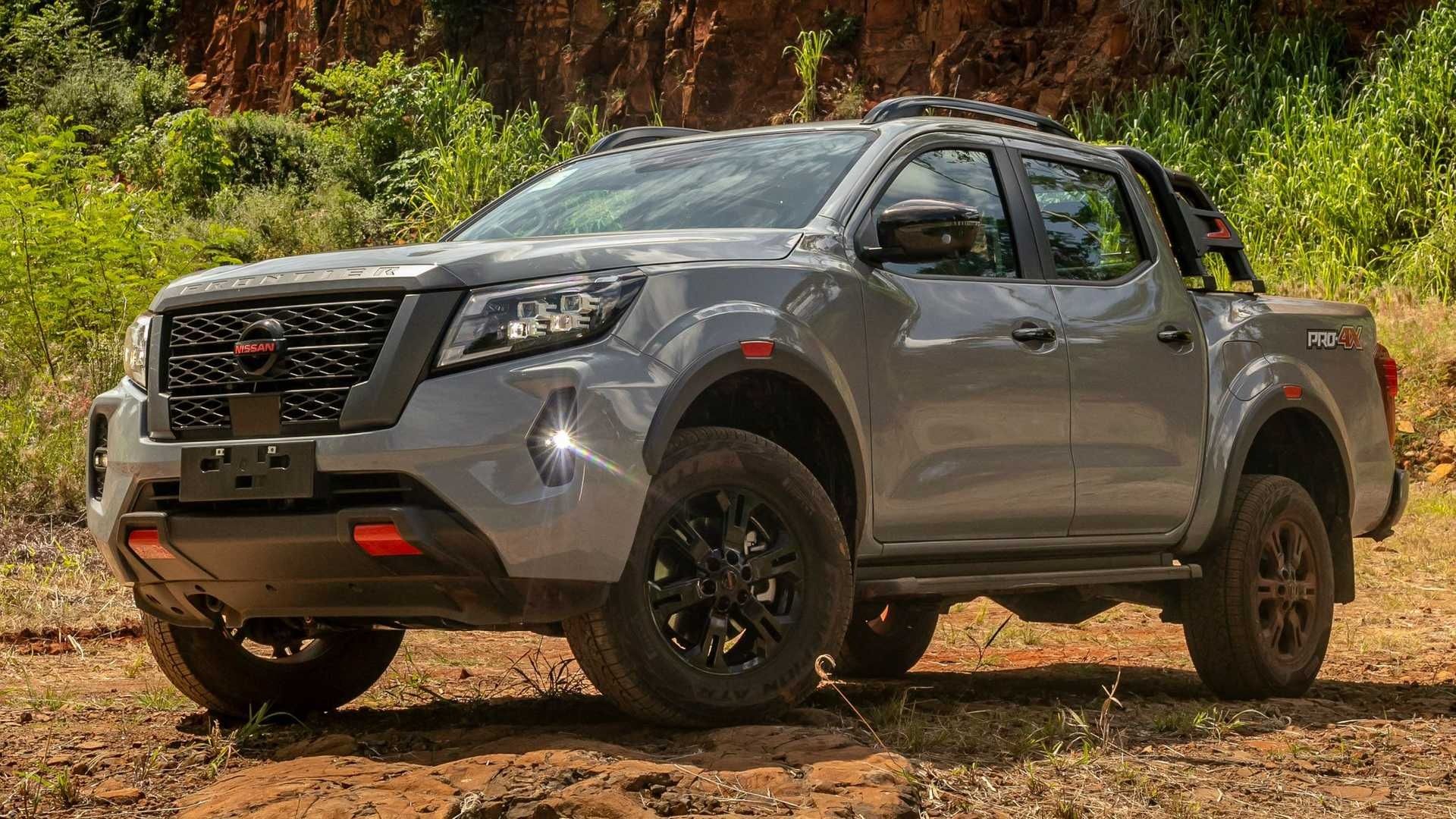
As for what’s new, the 2025 Nissan Frontier benefits from a mid-cycle refresh that includes a more refined grille design, updated interior technology, improved comfort features like a tilt-and-telescoping steering wheel, and the addition of a six-foot bed option.
Compared to the last time I drove the Frontier, visibility has improved; the prior model’s bulky hood limited the view, but the refreshed style coupled with the now-standard 360-degree camera helps mitigate that issue.
“The last time I drove the Frontier, visibility over the bulking hood was limited. The new style is improved and the standard 360-degree camera is a welcomed addition.”
However, not everything has changed. “The heavy steering was an issue in my last review and it doesn’t feel like it has been changed at all.” While the Frontier continues to be a capable and comfortable work truck with tech that serves a purpose, this persistent steering characteristic remains one of its few lingering drawbacks.
4. Chevrolet Colorado
The Chevy Colorado is a solid option for drivers who want utility without paying big at the DMV. The truck’s lower MSRP and medium weight class keep renewal costs low across many U.S. states.
States that use tiered systems such as Idaho or Montana place the Colorado in one of the lower bands, making it ideal for long-term savings.
For a truck that presents a rugged, no-nonsense exterior, the 2025 Chevrolet Colorado is surprisingly refined in terms of ride comfort. It’s easy to handle and feels composed on twisty roads, making it a practical choice for both daily driving and weekend adventures.
Off-road performance is another strong point, with capabilities that hold up well even in challenging conditions. Rear-wheel drive is standard on the WT and LT trims, while all-wheel drive comes standard on the rest of the lineup.
Powering every 2025 Colorado is a single engine choice: a turbocharged 2.7-liter four-cylinder that’s widely praised. It puts out 310 horsepower and 430 pound-feet of torque, which delivers lively acceleration and more than enough muscle for most tasks. With a payload capacity of 1,710 pounds and a maximum towing capacity of 7,700 pounds, it competes strongly in the compact pickup segment.
The Colorado’s fuel economy is average for its class, with EPA ratings between 16 and 20 mpg in combined city and highway driving. It won’t top the efficiency charts, but it’s respectable given the truck’s performance and utility.
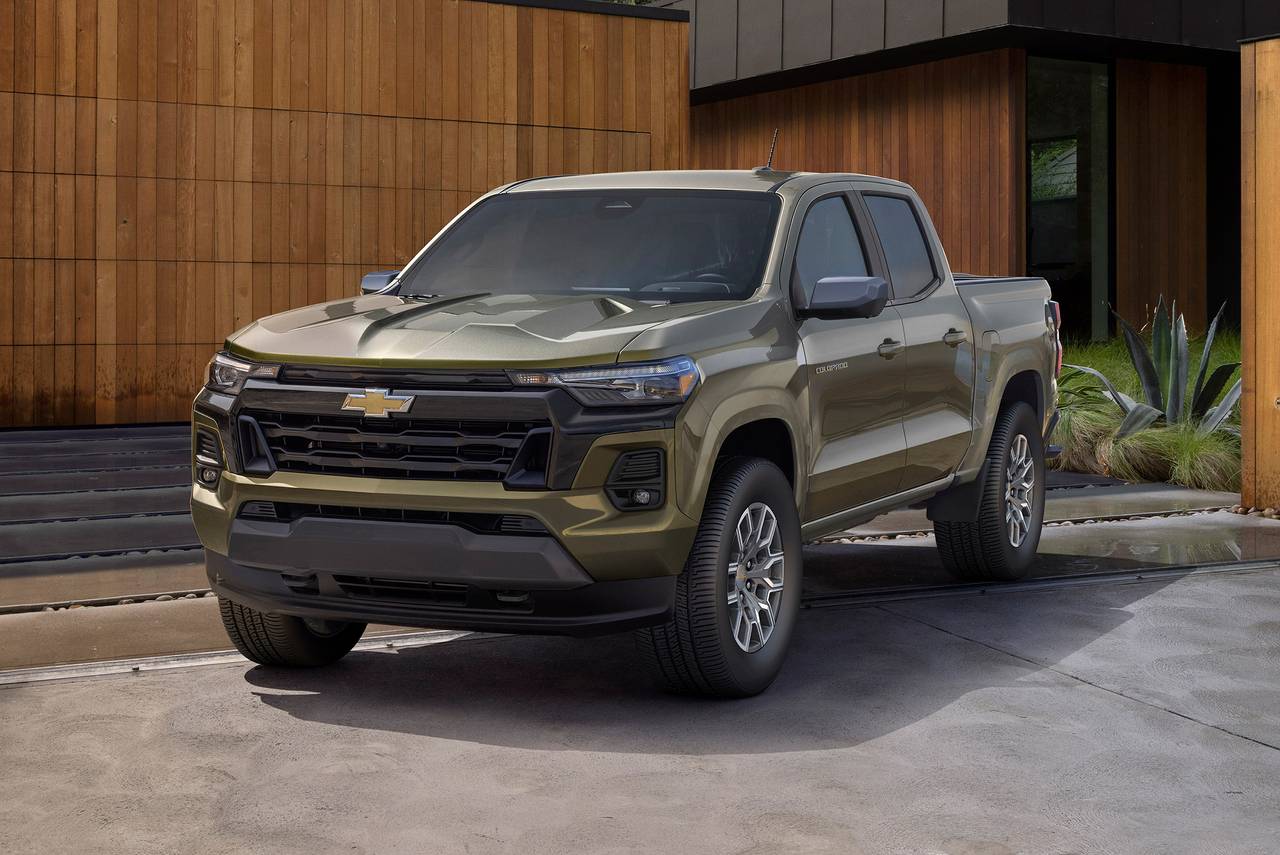
All 2025 Chevrolet Colorado models come in a Crew Cab configuration with seating for five. The interior is thoughtfully designed and well-built, though some lower trims still feature hard plastics. Rear legroom is somewhat cramped at 34.7 inches, making it comparable to a compact sedan.
There’s only one bed length available—61.7 inches—but it offers 41.9 cubic feet of cargo space, which is the best in the segment for what was traditionally considered a short bed. Those who need more cargo room may want to consider the Toyota Tacoma or Nissan Frontier, which are currently the only compact pickups that offer longer beds.
Value is one of the Colorado’s strongest selling points. The 2025 model earns a high value rating, thanks to a strong balance between features, performance, and anticipated ownership costs. This rating considers the MSRP of both the base and top trims, and the overall ownership experience it delivers.
On the safety front, the 2025 Colorado receives a four-star overall safety rating from the National Highway Traffic Safety Administration. Standard driver-assist features include lane-keep assist, lane-departure warning, and forward collision alert.
For those with small children, the rear seats come with two complete LATCH connector sets and a tether anchor for the middle seat, making car seat installation easier and safer. At the time of writing, there’s no predicted reliability score for the 2025 Colorado.
As for pricing, Chevrolet hasn’t officially announced the 2025 Colorado’s MSRPs yet, but expectations place the base WT (Work Truck) trim around $32,000. The top-of-the-line ZR2 trim is projected to start near $50,000. More information will be available in the manufacturer’s detailed breakdown of models and trims.
If you’re trying to decide which version of the Colorado is best for you, the Z71 trim stands out for its mix of performance and features. It comes equipped with a 120-volt power outlet in the truck bed, an 11.3-inch infotainment touchscreen, and wireless Apple CarPlay and Android Auto.
However, if you’re planning to take your truck off the beaten path, the Trail Boss trim may be the better fit. Its additional 2 inches of ground clearance, automatic locking rear differential, and hill-descent control make it better equipped for serious off-road use.
Also Read: 12 Popular Cars Everyone Hates and 10 That Drivers Actually Love
5. Honda Ridgeline
While the Ridgeline’s unibody design may split opinions among traditional truck buyers, it pays off when it comes to registration.
It’s lighter and behaves more like a crossover than a full-on pickup. As a result, tag renewals often mimic those of SUVs, not heavy trucks.
In states like Michigan, where fees are based on base MSRP, the Ridgeline’s starting price keeps renewals modest often under $150 even for newer models.
The Honda Ridgeline takes a different path from the growing trend of oversized, aggressive-looking pickup trucks and increasingly extreme off-road variants. Rather than chasing brute force aesthetics, it prioritizes genuine capability and everyday versatility in a more realistically sized package.
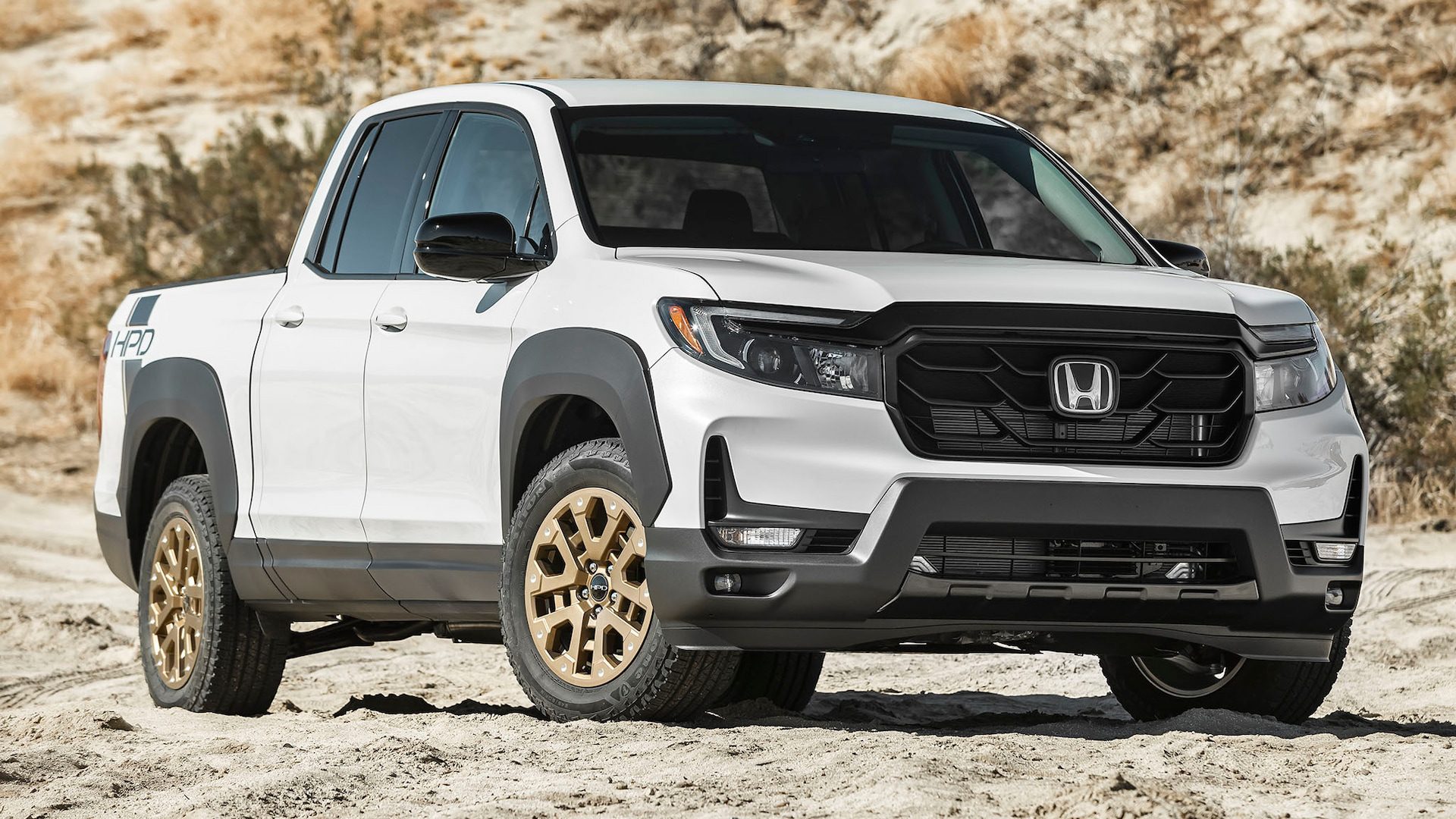
Built on the same unibody platform shared with the Honda Pilot SUV and Odyssey minivan, the Ridgeline comes exclusively as a four-door crew cab paired with a five-foot bed. It features a single powertrain: a V-6 engine coupled with all-wheel drive, delivering quick acceleration that doesn’t leave the truck feeling underpowered.
On the road, the Ridgeline stands out with a ride quality and handling character that feel far more carlike than what’s typical in the segment, resulting in a more comfortable driving experience than most body-on-frame pickups can offer.
While it might not exude the rugged, tough-as-nails persona many truck buyers seek, the Ridgeline compensates by being more livable and impressively practical for everyday use.
Pickups With the Priciest Tags
Pickup trucks are built to haul, tow, and take a beating—but when it comes to keeping them on the road legally, some will haul a lot more out of your wallet than others.
Registration tags might seem like a minor annual expense, but depending on the truck you drive and the state you live in, they can quickly become a serious financial burden. High vehicle values, heavy curb weights, and certain state tax structures can push tag renewal costs into jaw-dropping territory.
In this article, we spotlight the pickups that come with the steepest price tags—literally—when it’s time to renew your registration. Whether you’re budgeting for your current ride or shopping for your next one, it pays to know which trucks carry the priciest tags.
1. Ford F-250 Super Duty
Heavy-duty trucks like the F-250 are costly to register, especially in states that charge by weight.
With a gross vehicle weight rating (GVWR) well over 8,500 lbs, states like California and Colorado place it in the top tier for registration renewal.
In some cases, owners pay upwards of $600–$700 annually just to keep their plates current, particularly during the first five years.
The Ford F-Series Super Duty entered its fifth generation in the 2023 model year, debuting with bold new styling, updated features, and a lineup of more powerful engine options. While the truck remains largely unchanged since that major overhaul, the 2025 model year brings a handful of noteworthy updates that enhance its appeal.
Among the biggest changes is the introduction of the Platinum Plus package, which arrives to replace the now-discontinued F-250 Limited. Built on the foundation of the already upscale Platinum trim, the Platinum Plus distinguishes itself with a satin-finish grille adorned with bright chrome inserts and 20-inch aluminum wheels finished in a combination of bright-machined surfaces and dark carbonized gray paint.
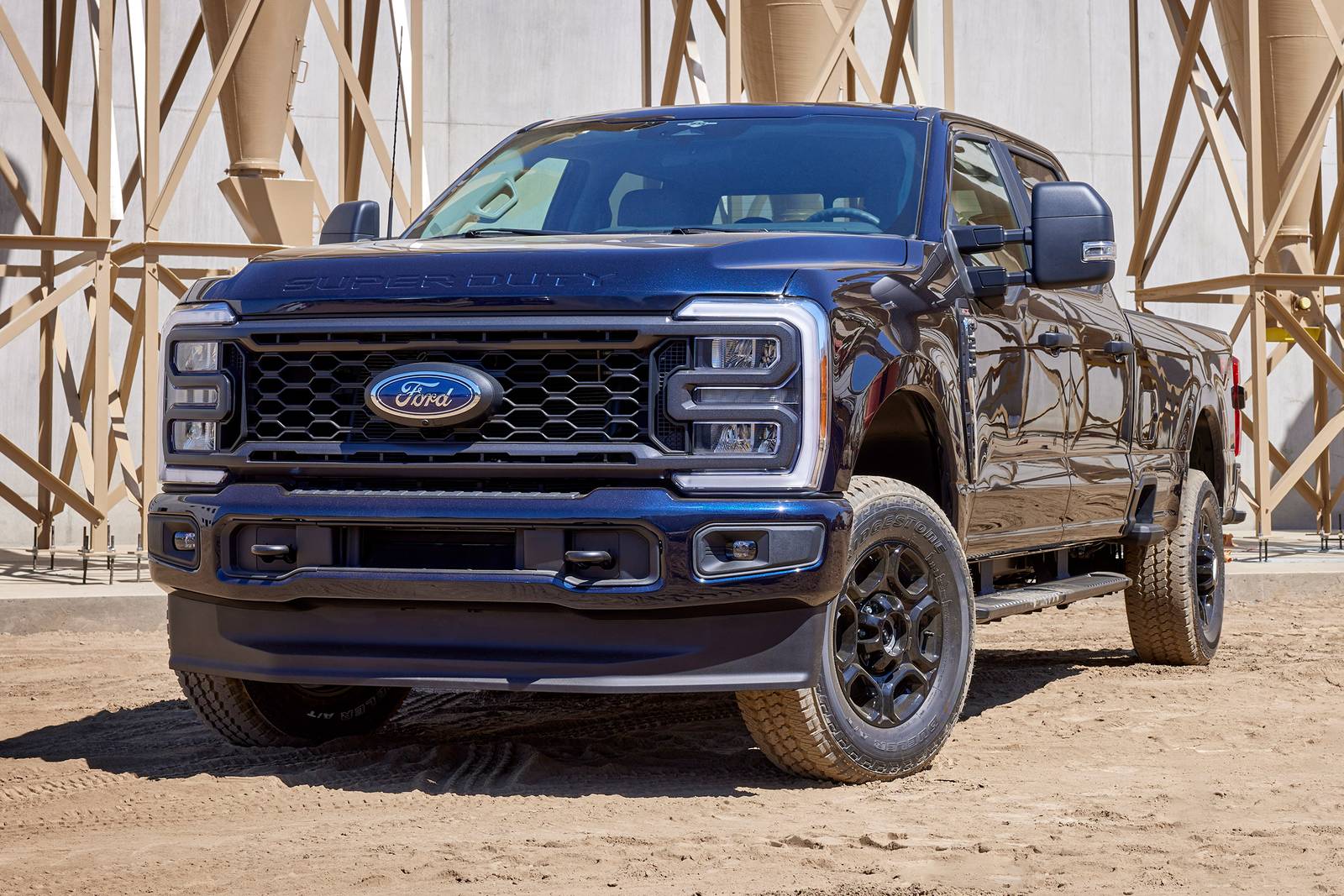
The elevated design continues into the cabin, where the Platinum Plus introduces exclusive Smoked Truffle upholstery accented with bronze trim. The seats are wrapped in luxurious quilted Venetian leather, stitched with refined French detailing.
A split center console trimmed with Slate Sapelle woodgrain adds a sophisticated touch, while premium features like Max Recline front seats, a twin-panel panoramic roof, and a 1,080-watt 14-speaker B&O premium sound system contribute to a high level of comfort and luxury.
Platinum Plus owners also enjoy a range of exclusive perks, including two years of complimentary maintenance, personalized support from Ford’s truck experts, elevated status in the FordPass Rewards program, and a welcome gift presented in a handsome mahogany box.
Though the standard F-250 Platinum doesn’t reach the same luxury heights, it still offers a refined experience. For 2025, it receives a styling update that includes a black grille and a matching black appliqué on the tailgate. The interior also gets a refresh, now featuring Black Onyx surfaces paired with Platinum Blue accents throughout the cabin.
Other key updates for the 2025 Super Duty lineup include a new Trailer Technology package. This suite adds a trailer tire-pressure monitoring system (TPMS), enhanced blind-spot warning that extends coverage to include the full length of the trailer, and the option to integrate an auxiliary camera for improved towing visibility.
2. Ram 3500
The Ram 3500 is a powerhouse on the job site, but it’s also one of the most expensive trucks to register. Its curb weight, heavy-duty classification, and high sticker price combine to create sky-high fees in most weight-based states.
In states like Iowa or New York, owners report paying over $500 for renewal and even more with dual-rear-wheel or diesel configurations.
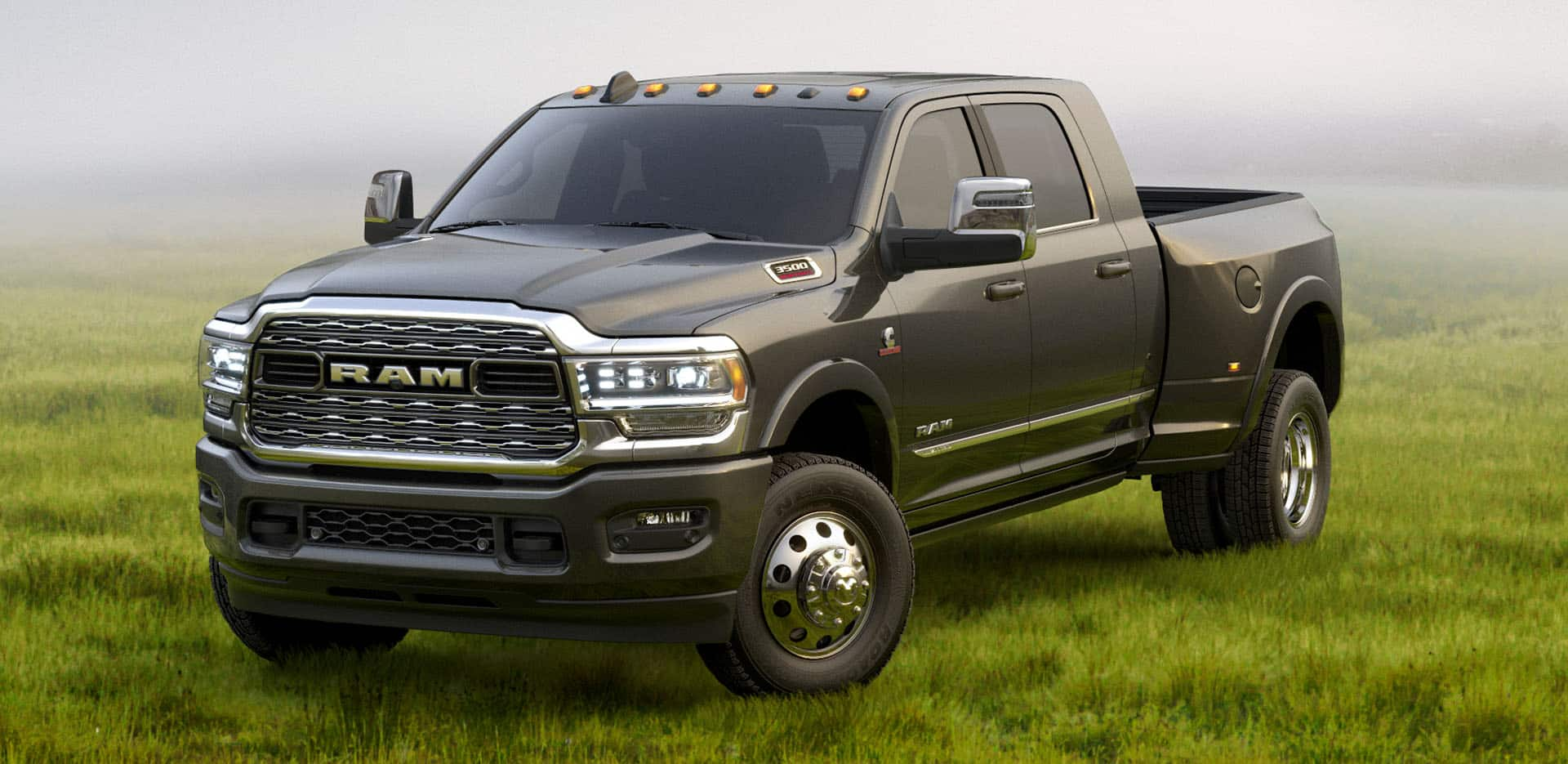
If a 20,000-pound maximum towing capacity doesn’t quite cut it—or if you’re looking to haul more than 4,000 pounds in the bed—then the 2025 Ram 3500 is the heavy-duty truck you’re after. These figures represent the upper limits of what the Ram 2500 can handle, making the 3500 the go-to option for those needing serious muscle.
The Ram 3500 boasts a maximum towing capacity of 36,610 pounds and a payload rating of up to 7,590 pounds. Of course, these are best-case-scenario numbers, and actual capabilities can vary significantly based on a variety of configurations and conditions. Still, if your priority is getting the most powerful Ram truck available, the figure that counts most is 3500.
3. GMC Sierra 1500 Denali
The luxury version of the Sierra 1500 comes loaded with high-end tech and powerful V8 options and a price tag to match.
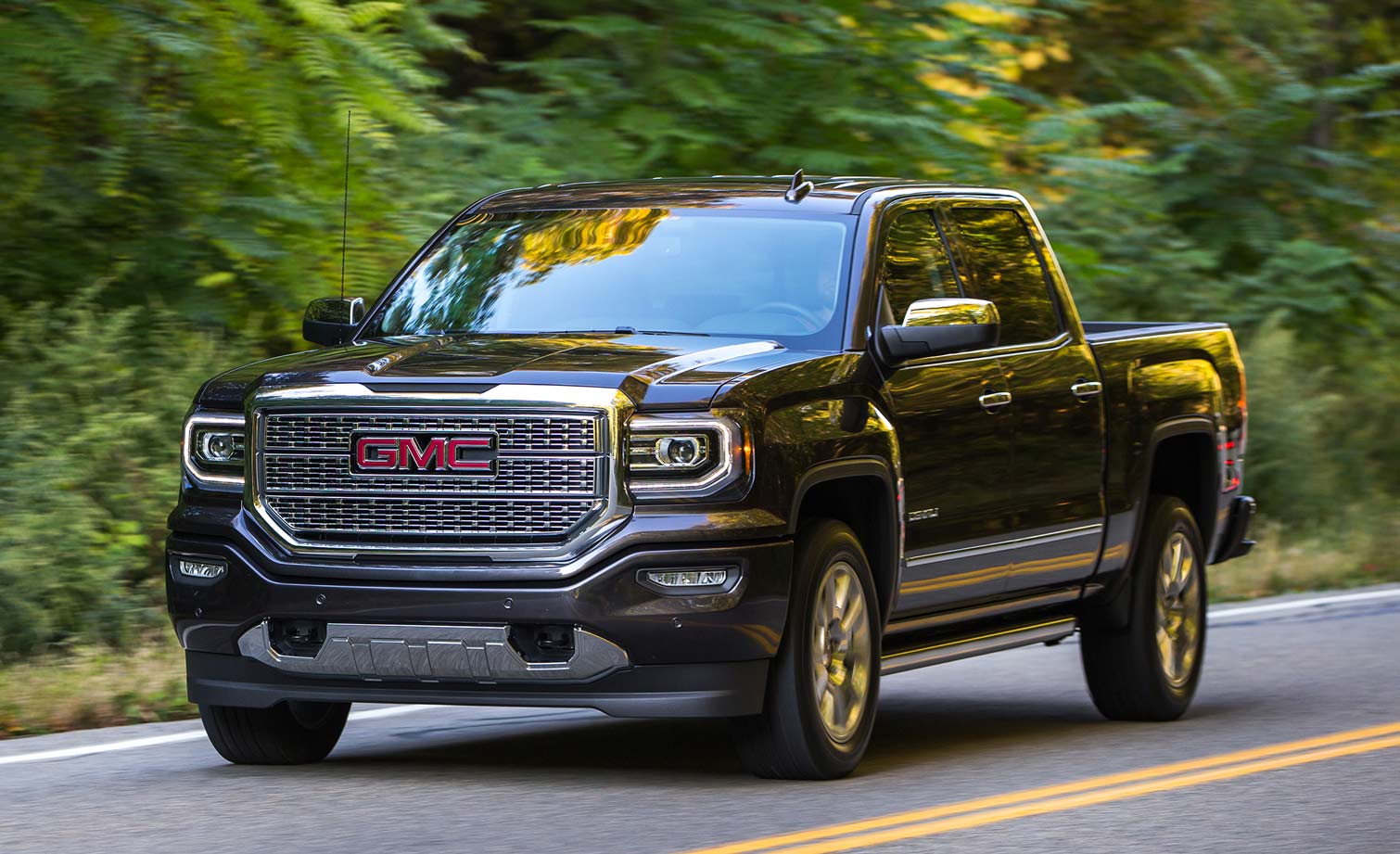
That high MSRP means owners in value-based registration states like Michigan or Arizona will pay a premium at renewal time. New Sierra Denali owners could be looking at annual tag fees between $400–$600 for the first few years.
Luxury truck is no longer a contradiction in terms. For years, manufacturers like GMC, Ford, Chevrolet, and Ram have served buyers who want the rugged capability of a pickup combined with the refinement of a high-end sedan.
That demand has only grown, making the segment more competitive than ever. At the heart of this market is the 2025 GMC Sierra 1500 Denali. A mainstay in GMC’s lineup for over two decades, the Denali continues into 2025 with two distinct models: the Sierra 1500 Denali and the Sierra 1500 Denali Ultimate.
For 2025, the Sierra Denali Ultimate comes equipped with Super Cruise as a standard feature. Super Cruise, GM’s hands-free highway driving technology, earns high marks for convenience and capability, and it’s a logical fit for the top-tier Sierra model.
Previously, in 2024, the Sierra Denali received several upgrades including a power boost for the available diesel engine. Additionally, retractable side steps were introduced for both Denali and Denali Ultimate trims, and an active exhaust system was added to the list of available options.
4. Toyota Tundra Capstone
The Tundra Capstone is Toyota’s flagship full-size pickup, and it carries a luxury-level MSRP well above $70,000.
In states like Virginia or Georgia, where ad valorem taxes or registration surcharges are based on vehicle value, that price translates into steep annual fees. Newer models routinely hit the $500–$700 range just for renewal, especially in the early years.
The Tundra Capstone is exclusively offered in a crew-cab configuration paired with a 5.5-foot bed, and it rides on standard chrome 22-inch wheels. Its grille is framed in body-colored trim—like the example shown in Wind Chill Pearl—and features chrome inserts.
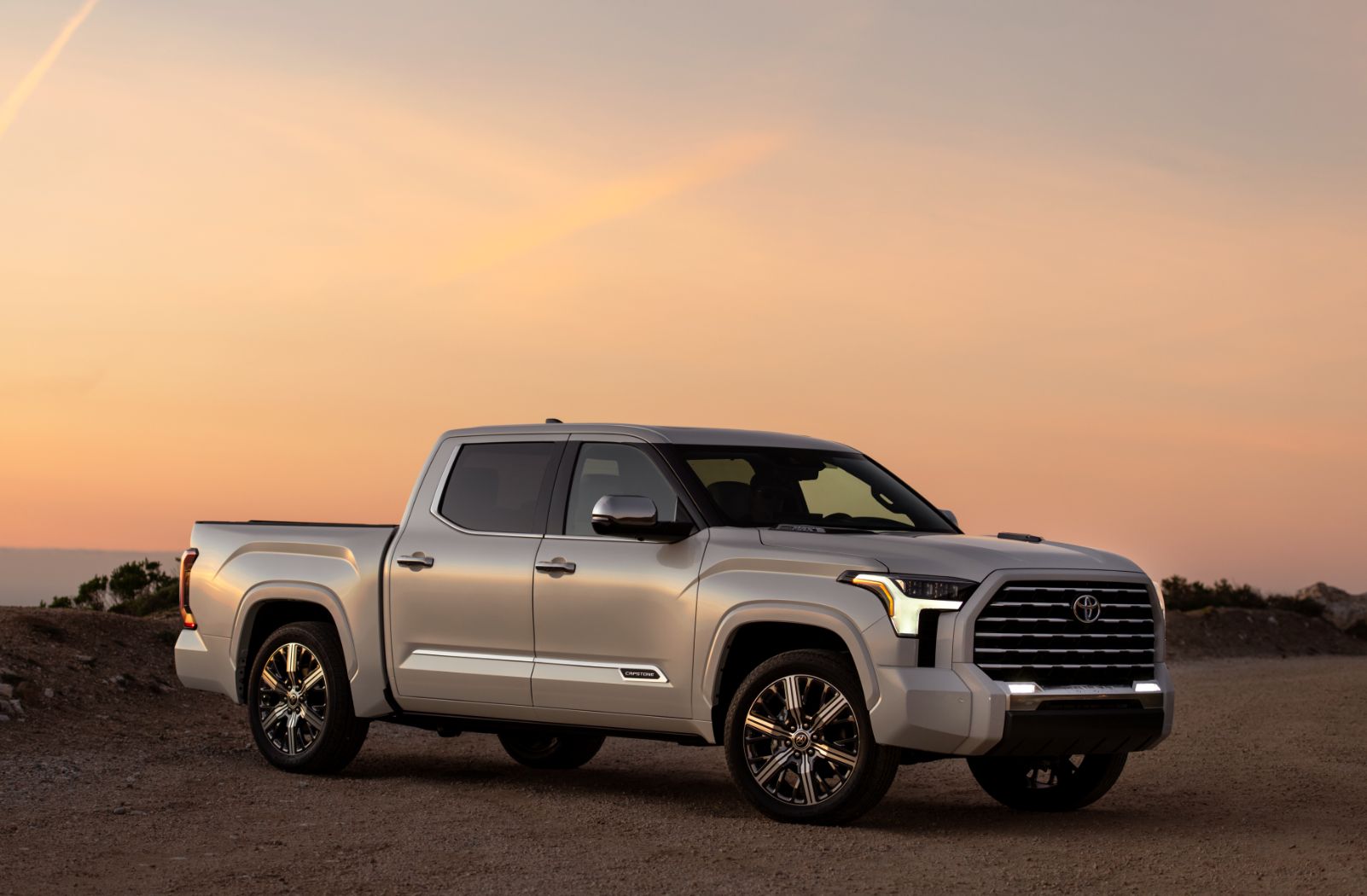
The “Tundra” script on the tailgate is also finished in chrome. Additionally, features like automatic running boards and a bedside step, which are optional on other trims, come standard on the Capstone.
Inside, the Capstone features a black and white leather interior accented with walnut trim, along with an illuminated Capstone logo embedded in the dashboard.
The cabin comes fully equipped with all of the Tundra’s latest tech features, including a 14.0-inch touchscreen with wireless Apple CarPlay and Android Auto, a 12.3-inch digital gauge cluster, a 10.0-inch color head-up display, and a premium JBL sound system. Acoustic glass on the front doors is unique to the Capstone, and a panoramic sunroof comes standard.
5. Rivian R1T
Electric trucks like the Rivian R1T come with both cutting-edge performance and regulatory costs. Many states are still adjusting how they handle EVs, with some imposing EV-specific surcharges on top of standard registration.

Combine that with a starting MSRP near $75,000, and owners are frequently hit with fees in excess of $700–$800 in states like Illinois, Texas, and North Carolina. Rivian’s updated electric vehicles, the R1S and R1T, come with a wide array of meaningful enhancements beneath the surface.
Among the upgrades is a new heat pump, which boosts efficiency, along with several other modifications designed to streamline production and reduce costs for consumers. One such change includes the introduction of a lithium iron phosphate (LFP) battery for the base model.
The other battery pack configurations have also been revised compared to the pre-refresh models, and theoretically, they should offer improvements across the board—that’s typically the goal of a mid-cycle update. However, as Kyle Conner from Out of Spec Reviews discovered, that expectation doesn’t always hold up.
Kyle took a 2025 Rivian R1T equipped with the Dual Motor setup and the Max battery pack on a road trip to evaluate its long-distance performance. His conclusion? The experience revealed that it has room for improvement.
Registration renewal might not be top of mind when shopping for a pickup, but it can make a difference in long-term ownership costs.
While midsize trucks like the Toyota Tacoma and Nissan Frontier keep things affordable year after year, heavy-duty haulers like the F-250 or luxury-tier models like the Tundra Capstone can strain your wallet beyond fuel and maintenance.
When budgeting for a truck, remember to check your local DMV’s fee structure sometimes the best savings come from the smallest details.

